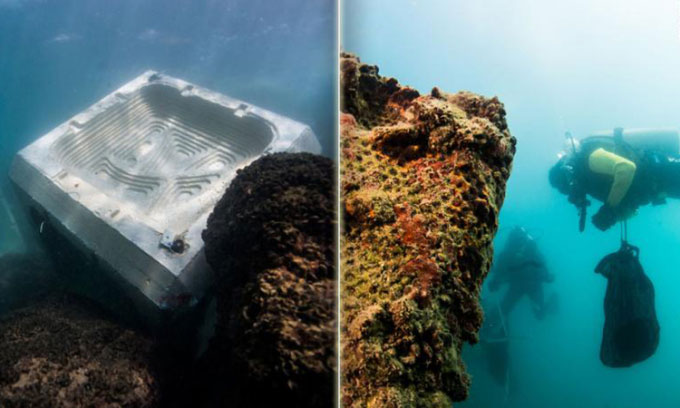Israeli Startup Develops Eco-Friendly Concrete That Becomes Stronger with Marine Life Attachment
Rising sea levels are increasing the demand for flood prevention measures. However, concrete, the primary material used in many artificial barriers, can significantly impact marine life and the climate. To promote more sustainable and environmentally friendly coastal structures, Israeli startup ECOncrete has developed a product that can reduce carbon emissions and attract marine organisms.

ECOncrete materials mimic the shape and texture of rocks to help marine organisms attach. (Photo: ECOncrete)
Concrete coastal structures provide many benefits for humans. However, numerous marine organisms also inhabit coastal areas, and these artificial structures can disrupt their ecosystems. “70% of coastal structures worldwide are made of concrete,” said marine ecologist Ido Sella, co-founder and CEO of ECOncrete, in an interview with CNN on October 4.
Concrete can leach chemicals that increase the alkalinity of surrounding waters, making it harder for some marine organisms to survive. The flat, smooth surfaces of structures like seawalls also make it difficult for marine life such as algae, oysters, and barnacles to attach.
ECOncrete manufactures additives that can be mixed with concrete to help this material chemically balance better with seawater. The company also produces seawall blocks that mimic the shape and texture of marine rock. These blocks feature tiny grooves on their surfaces for larvae to attach and grow, with undulating sides and shallow depressions that retain seawater like small tidal pools.
ECOncrete’s products have been installed at over 35 locations worldwide in the past eight years, including New York, Rotterdam, and Monaco. Sella stated that they can more than double biodiversity compared to traditional concrete. This allows the next generation of organisms to thrive on the concrete surface and attract other species, kickstarting a self-sustaining ecosystem.
Traditional concrete not only harms marine life but also emits a significant amount of carbon. Cement, a component of concrete, contributes up to 8% of global carbon emissions. ECOncrete claims that its additives reduce the amount of cement needed in the concrete mix, thereby lowering carbon emissions. However, some ecologists warn that artificial structures cannot fully replace the ecological benefits of natural coastlines.
Organisms living on the surface can help make ECOncrete more durable over time. They envelop the concrete with a layer of calcium carbonate, one of the main components of shells, preventing the concrete from cracking and increasing its tensile strength by up to ten times. This new material is 15% more expensive than traditional concrete but will save costs in the long run due to reduced maintenance needs.


















































